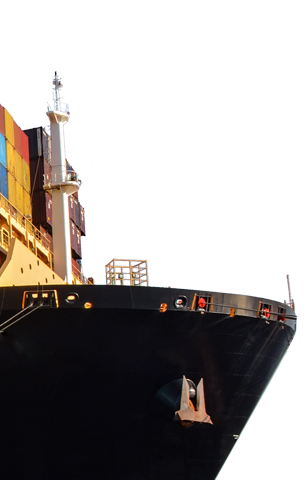SHIFTING GEARS: What’s driving today’s auto industry
- Home
- >
- Cargo Blog
- >
- SHIFTING GEARS: What’s driving today’s auto industry
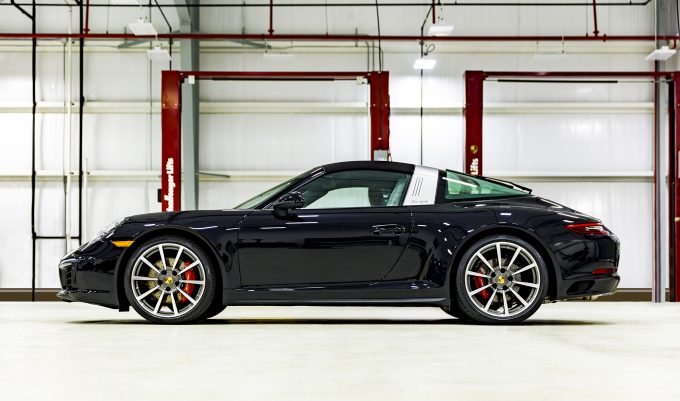
By Lori Musser
Story first appeared in the 2021 JAXPORT Magazine
Innovative technology, evolving consumer preferences and new regulations are driving a whole new auto industry.
Louis Yiakoumi is a UK-based auto industry expert, known as the founder of Automotive Logistic Group and now Chief Connector at LConnect. He says while COVID-19 may have “exacerbated the need for cost savings and cash flow management,” there are two trends that stand out for autos looking forward: digitization and the electrification of vehicles.
Vehicle digitization can encompass: connectivity for social media, music and apps while driving; predictive maintenance; and driver data security, among other advancements. Today’s drivers demand these features.
Similarly, the auto industry’s supply chain is undergoing a digital transformation expected to engage customers, collect and use data for better service, and enhance production.
While a connected car is only as good as its input data, digitization is an important step for automotive logistics and will contribute to cost savings and efficiencies. And the electrification of vehicles will definitely change automotive supply chains and logistics, according to Yiakoumi.
ELECTRIC VEHICLES
Governments around the world are excited that electric vehicles (EV) cut greenhouse gas emissions, and are setting goals that may be tough to achieve through improvements to internal combustion engine (or ICE) vehicles alone.
EVs will come to the rescue, in time: CarandDriver.com says Americans are keeping their cars more than ten years, and the U.S. and its love affair with large SUVs and pick-up trucks will slow mass adoption. The switch will accelerate when EV vehicles make financial sense to buyers, and it will be especially speedy in England and France when they prohibit the sale of fossil-fueled vehicles in 20 years.
“Although the trend to electric vehicles is encouraged by government legislation…car buyers will grow to love electric vehicles for the speed, total cost of ownership, and technology. So while the growth seems rather slow at the moment, I think the take up will speed up very quickly,” said Yiakoumi.
Auto industry supply chains for internal combustion engine components will be impacted as well. EV motors have a handful of moving parts, and don’t need complex transmissions, fuel systems, fancy gearboxes or exhaust systems. They do need battery packs that are sometimes being made by the OEMs or newcomers to the automotive supply chain. The entire auto industry will have to be flexible to continue to flourish.
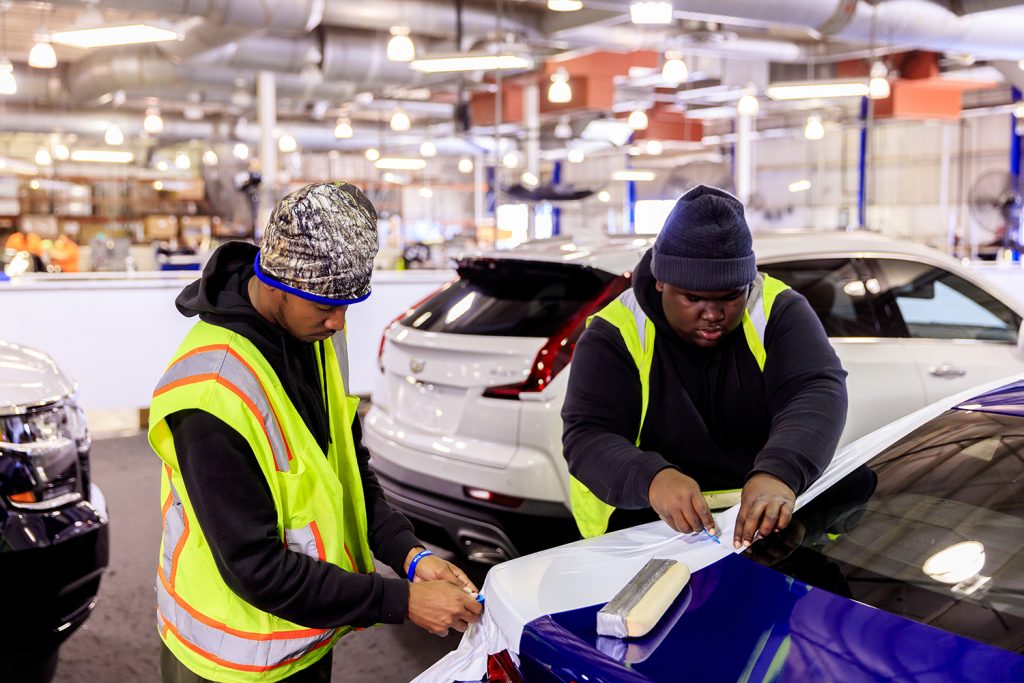
The need for batteries and electric motors and transmissions will undoubtedly rise and some analysts speculate the relative similarity of electric motors may encourage OEM consolidation, or force automakers to compete based on other attributes.
The EV batteries themselves may challenge the transportation industry. They are relatively heavy, may have to be treated as hazardous goods, and be kept with enough charge to go from the factory to the final location, said Yiakoumi.
“Toyota has been a pioneer in this arena, starting with the launch of the Prius Hybrid more than 20 years ago, which paved the way for an ever-expanding lineup of alternative fuel vehicles,” said Casey Gunnell Jr, Group Vice President of Parts Supply and Distribution at Southeast Toyota, an auto processor at JAXPORT’s Talleyrand Marine Terminal.
Gunnell added, “That said, the fact remains that the prevalence of electric vehicles remains fairly low with electric vehicle registrations at less than 2% of total industry. News about the emergence of electric vehicles still greatly outnumbers the customers actually demanding electric vehicles, with many unanswered questions concerning battery technology, charging infrastructure and speed, and even the ability of the grid to handle greater demand.”
Steve Taylor, CEO of auto processor AMPORTS, said the company is getting ready for the EV wave that will happen as battery technology improves and range anxiety falls. “Right now, we handle many hybrids but fully electric vehicles are still a small percentage for us in Jacksonville, but we see it coming. Every day we receive requests to ask what capabilities we have,” said Taylor.
Volkswagen Group of America is in the midst of a push toward electrification. “We have made a huge commitment to invest. We’re putting our future in electric vehicles, and are placing great emphasis on powertrain,” said Mark Boucher, Director of Vehicle Logistics with Volkswagen Group of America, Inc. Two key considerations that may affect distribution, he said, are that EVs must always maintain a state of charge, and that, in general for their size, they are a heavier product.
With good planning, accommodating the idiosyncrasies of EVs will be all in a day’s work. For example, auto processors are used to jumping ICE vehicles. “The electric is a little more complicated because we have to charge for a period of time and then evaluate why it lost its charge – was it a battery issue or just something left turned on? This is not a major adjustment issue,” said Taylor, noting AMPORTS will install charging stations at JAXPORT to accommodate demand, as it has in its other port locations. Taylor expects that the issue of varying charging cords and stations will eventually sort itself out as industry standards are established, just as they have been with, for example, fuel nozzle dimensions.
“You may eventually see charging pods and a circle of cars around them. Today, we park [ICE] vehicles in a line. As we move forward there will be some minor facility changes,” said Taylor.
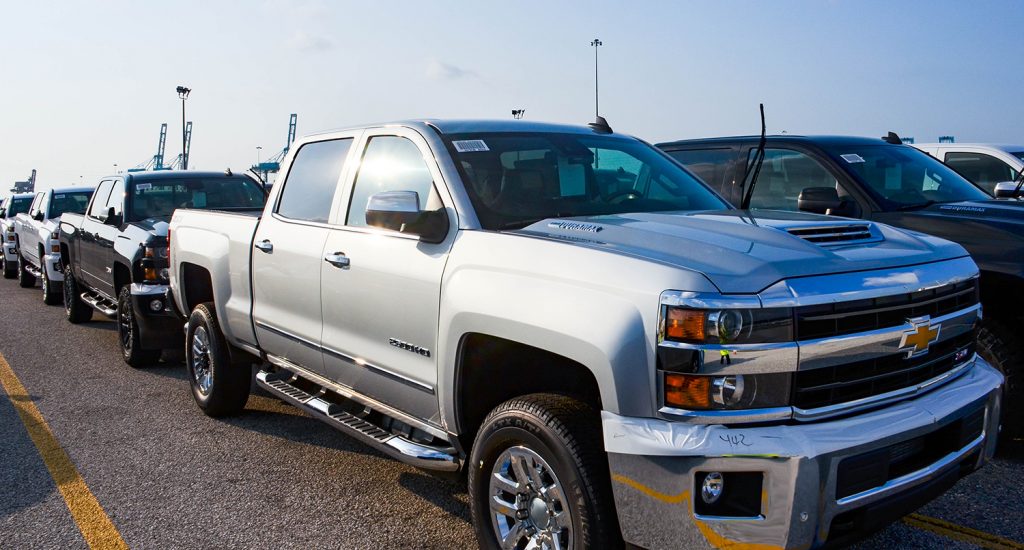
OTHER IMPORTANT TRENDS SHAPING THE SECTOR
The large vehicle trend is important too, said Taylor. “SUVs and pick-up trucks are on the rise. Our latest projection is that they will be 80% of the market (including crossovers). Only five years ago, it was closer to 50 percent.”
This segment of the auto market calls for more port-installed accessories like tow hitches, running boards, roof racks or even iPad holders, according to Taylor. “That’s good for business, but the downside is that the bigger vehicles take up more space – they are roughly 10 percent bigger so we need 10 percent more yard space,” he said.
The space requirement is an issue all along the supply chain. “A vessel rated for 3,000 vehicles may only be able to carry 2,800 SUVs,” said Taylor.
“The continued shifts from passenger cars to larger utility vehicles especially become a capacity issue on trains and trucks,” Boucher added.
THE CALL FOR ACCESSORIES
Port-installed accessories are vital to creating additional profits for OEMs and their dealership networks. They also create jobs in the port.
“Inventory shortages across the industry have pushed dealers to invest more in vehicle accessorization to create added value for their customers, using features that help customize mass-produced vehicles using a skilled labor force dedicated to quality,” said Gunnell.
Volkswagen now sells more SUVs than cars, and SUVs offer greater accessory opportunities. Boucher listed some of the most popular: trailer hitches, extended range remote starts, puddle lights, and rear bumper rock protectors, as well as digital accessories.
Accessory installation is becoming more highly skilled. Boucher said OEMs rely on expert port processors to handle much of the accessorization. “They have technical competencies. For example, they make sure a car is recoded after you add a hitch or other item.”
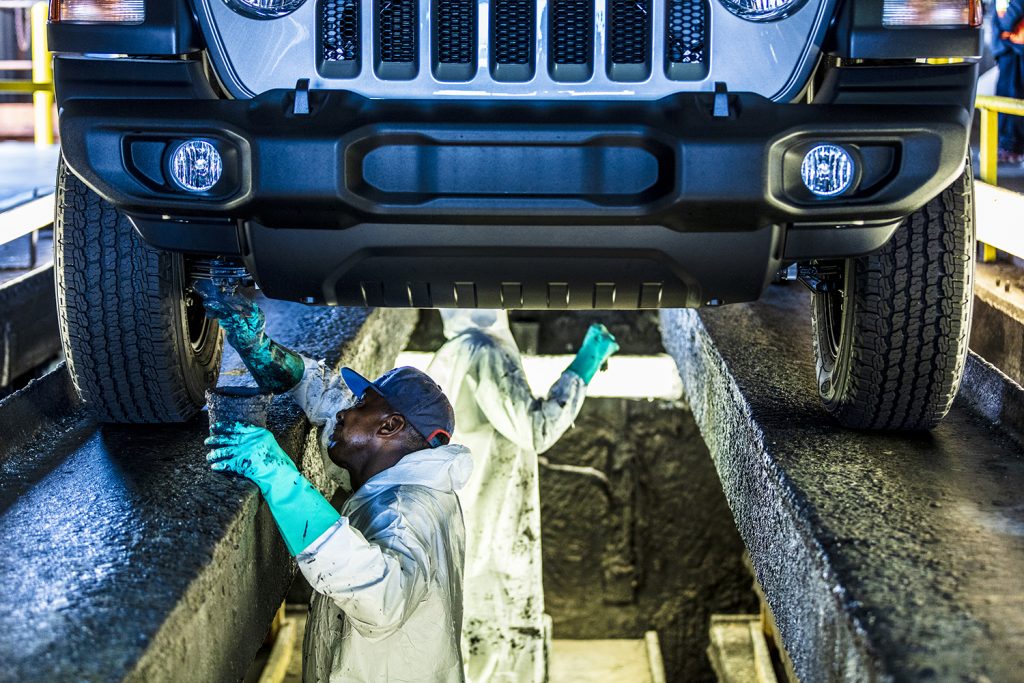
Car dealerships do accessory work, but, as the services become more technical, Taylor said processors can do it better. “A vehicle coming into JAXPORT may be going to 100 different dealers in the Southeast. If the OEM is doing quality control, they may have to visit 100 places. If AMPORTS does the work for all the dealers, the OEM can just send the quality control expert to one place. And, our labor becomes specialized in the technology and gains greater expertise,” said Taylor.
Taylor said that the Jacksonville labor force can be scaled up for increasingly complicated work. “Industry technology is changing rapidly and we have to have a workforce that keeps up,” said Taylor.
INDUSTRY IN TRANSITION
JAXPORT and its auto partners are serving an industry in flux. “Our friends at JAXPORT have been wonderful partners,” said Boucher. Regular discussions have been important, as have the port’s respect for the environment and available space.
As vehicles get larger, Boucher expects over-the-road and rail capacity to be a concern, via the Jacksonville gateway and nationwide.
[clickToTweet tweet=”Jacksonville is a great gateway. It has good port infrastructure and berthing … good rail connections that feed adjoining states. -John Felitto, President, Wallenius Wilhelmsen Vehicle Services Americas” quote=”Jacksonville is a great gateway. It has good port infrastructure and berthing … good rail connections that feed adjoining states. -John Felitto, President, Wallenius Wilhelmsen Vehicle Services Americas”]Wallenius Wilhelmsen Vehicle Services Americas’ President John Felitto said the most important things a seaport like Jacksonville can do to prepare for the changes in the auto industry are simple – “to provide: space at the right location, with first point of rest close to berth, within a quarter mile; good, well-dredged berths; and additional capacity for growth and for surges. When a port collaborates and shares strategic plans, the port and industry can grow together.”
On the political front, Felitto expects greater environmental regulation, which will increase costs and speed up electrification. He remains concerned about the future impacts of COVID-19, “In April-May-June 2020, there wasn’t a car plant in the world that didn’t close. I’m concerned about the lag effect.” On the positive side, “This pandemic did tighten up the supply chain, and cleaned up inventory issues in North America. The order to delivery cycle is now shorter,” he said.
“Politics is playing a larger role in the automotive industry with new trade agreements, Brexit in Europe, tariffs, nationalism,” said Yiakoumi. A general disruption is in progress. Electrified vehicles are coming downstream quickly and both consumers and governments are pushing for more. Big vehicles are here to stay, EVs are gaining traction, and digitization and customization are becoming increasingly popular with consumers. These auto industry trends are challenging automakers and all supply chains.
Yiakoumi said that flexibility is important to accommodate the ever-changing automotive industry. Capacity must be flexible, and the port must be ready for changes from ICE vehicles to EVs, and for changing global trade lanes.
“Jacksonville is a great gateway. It has good port infrastructure and berthing … good rail connections that feed adjoining states,” said Felitto, all factors that will play a key role as the industry continues to shift gears to adapt to the trends driving the auto industry into the future.

